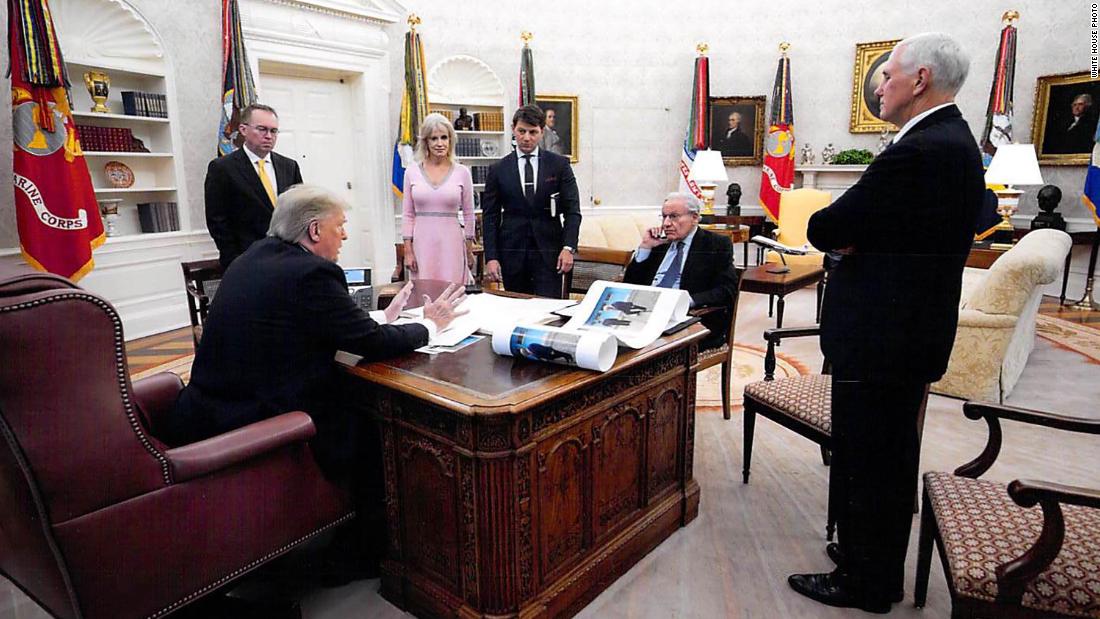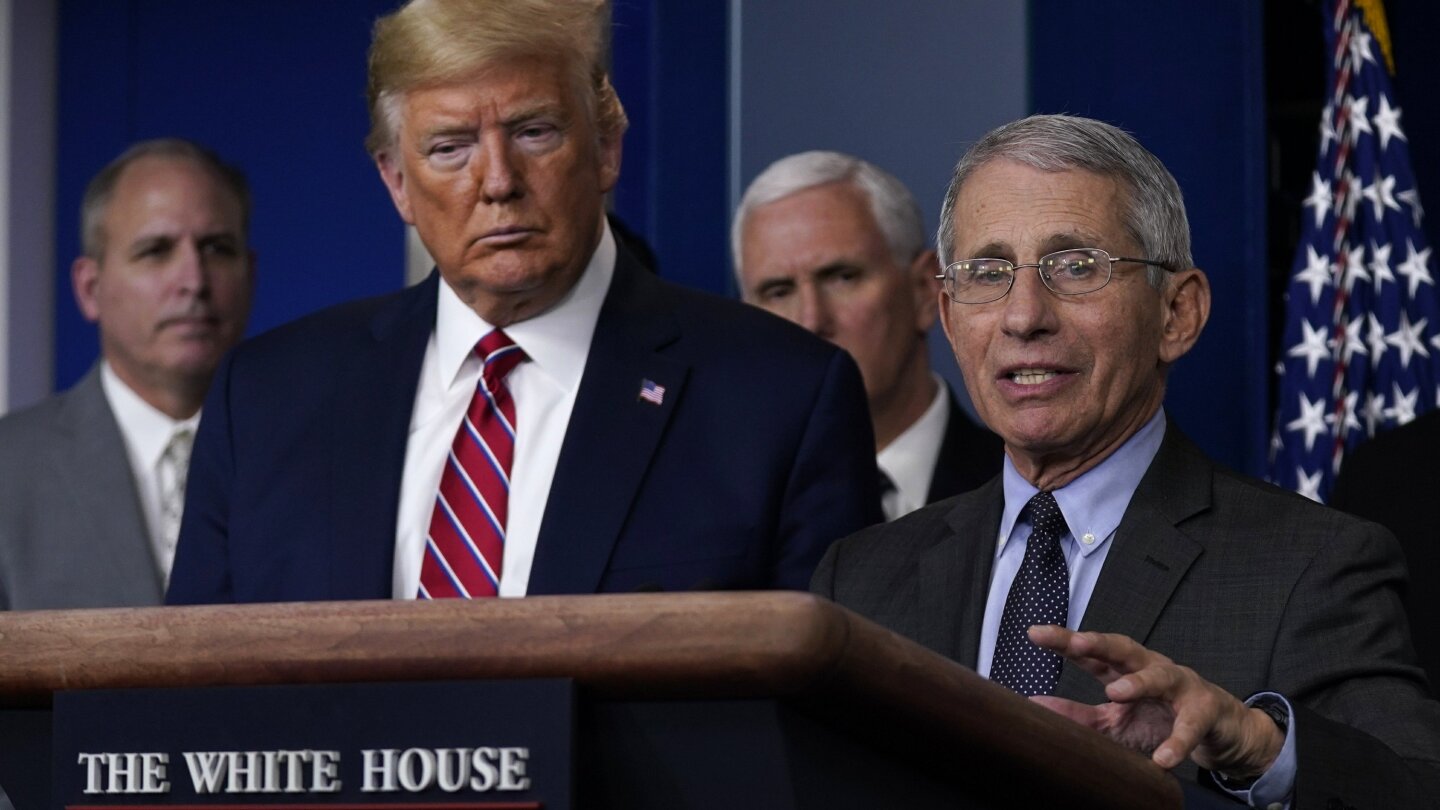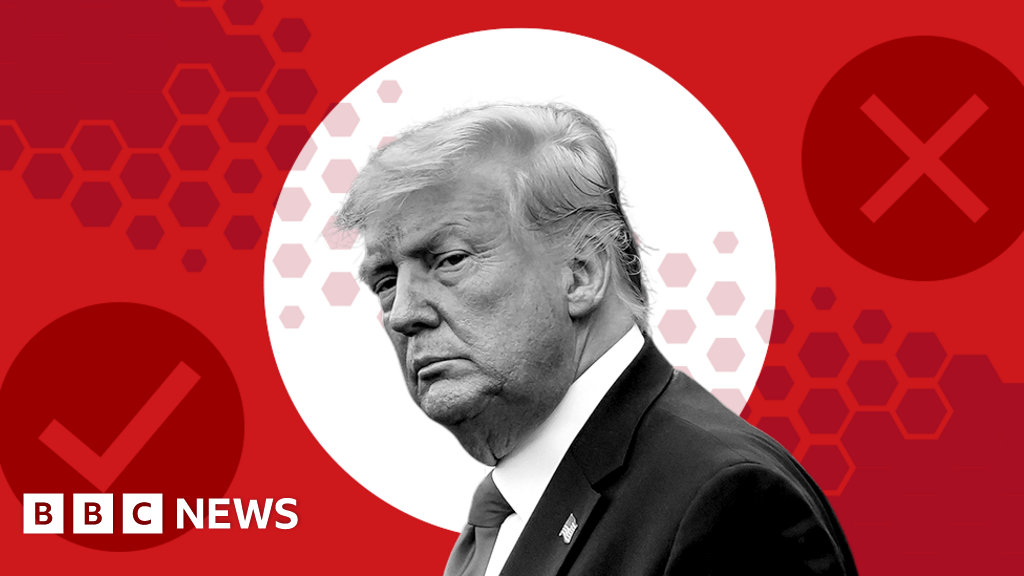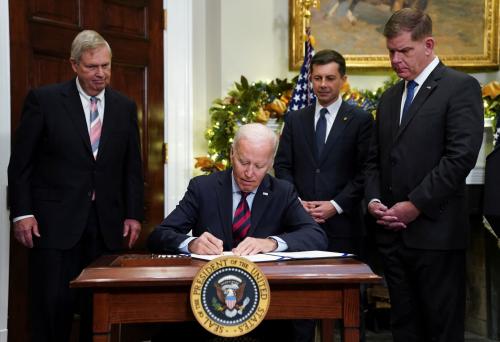Thanks for lying againObsidianJones, in the post right above mine.
Election thread
- Thread starter Shadyside
- Start date
- Status
- Not open for further replies.
So according to Trump advisors the plan is on election night if Trump is up by even 1 electoral point he'll declare victory and ask the Supreme Court to end the election and voting, regardless of the 270 threshold. So even if its Trump 7, Biden 6, Election over, Trump wins.
And I don't doubt for a second the Supreme Court would let him.
And I don't doubt for a second the Supreme Court would let him.
The GOP can just send in rioters to counting stations like in 2000. They already have precedent to stop the countSo according to Trump advisors the plan is on election night if Trump is up by even 1 electoral point he'll declare victory and ask the Supreme Court to end the election and voting, regardless of the 270 threshold. So even if its Trump 7, Biden 6, Election over, Trump wins.
And I don't doubt for a second the Supreme Court would let him.
I think Biden will win, so I'm a little less worried. Trump won because of a perfect storm of the Comey emails, running against an unpopular candidate, nonvoters, and cheating.
Biden is MUCH more popular than Hilary, we're seeing record early voter turnout, and Trump's attempt at manufacturing a scandal in Hunter Biden failed miserably.
Biden is MUCH more popular than Hilary, we're seeing record early voter turnout, and Trump's attempt at manufacturing a scandal in Hunter Biden failed miserably.
Hey, don't worry. Just use the actual facts.Thanks for lying again

'Pretty cool. Right?' Unfiltered moments from Trump's 18 interviews with Bob Woodward
Author and veteran journalist Bob Woodward conducted 18 interviews with President Donald Trump for his new book, "Rage." The wide-ranging conversations are a fascinating glimpse behind the scenes.
Trump Told Woodward that he knew it was Deadly Stuff in February 7th
He also said it was just going to go away.

All the President’s Lies About the Coronavirus
An unfinished compendium of Trump’s overwhelming dishonesty during a national emergency
And then he said that he always knew it was a Pandemic.

AP FACT CHECK: Trump says he always knew virus was pandemic
WASHINGTON (AP) — President Donald Trump is revising history as to how he described the dangers of the coronavirus as it swept across China and showed early signs in the U.S
So, "Oh Gee, Americans who weren't given the same information as the President of the United States who used his pull to downplay what he already knew to be a deadly pandemic got together in a show of support" isn't that much of a point as much as it was... of course they did if they didn't know how serious it was.
No average person or city worker will EVER be more informed than the President of The United States about a Pandemic. To equate their importance when one gets info from the CDC, and the other dictates what the CDC can say... I mean, there are no words for that.
It's like taking a picture of people who used to work in Asbestos factory in the 1900's and saying "Hey, if it was really so dangerous, why are they working there?"
For the record, I believe a lot of the blame falls on Trump. There were plenty of outstanding individuals who stepped up and risked the careers they fought their entire lives to get. And then once they were fired for daring to contradict the Word from Up High, there were Toadies who were ready to fall in line with whatever Lie the Administration was going with. They also deserve the blame.
CDC? You mean WHO, right? They were the ones who kept saying that there was no evidence of human-to-human spread. Were they Trump's puppets too?No average person or city worker will EVER be more informed than the President of The United States about a Pandemic. To equate their importance when one gets info from the CDC
And would you like me to quote Dr. Fauci saying that masks weren't recommended for the general public on March 8th?
Or was he just a puppet of the President too? Maybe he didn't get the same information as the President?
Or hey, how about this one when he says that he originally discouraged mask-wearing by the public because he didn't want to create a shortage (which would never happen, because, as he himself says, you could just put on any old cloth).
Perhaps Trump knew something that Fauci didn't, is that what you're saying? Or perhaps he was just a puppet and Trump was telling him what to say?
You’re funnyCDC? You mean WHO, right? They were the ones who kept saying that there was no evidence of human-to-human spread. Were they Trump's puppets too?
And would you like me to quote Dr. Fauci saying that masks weren't recommended for the general public on March 8th?
Or was he just a puppet of the President too? Maybe he didn't get the same information as the President?
Or hey, how about this one when he says that he originally discouraged mask-wearing by the public because he didn't want to create a shortage (which would never happen, because, as he himself says, you could just put on any old cloth).
Perhaps Trump knew something that Fauci didn't, is that what you're saying? Or perhaps he was just a puppet and Trump was telling him what to say?
I'll be here all week. Try the veal.You’re funny
1) I don't doubt Republicans will cheat. I think the cheating will be worse by Democrats.... and the cheating will be much less likely to be reported. I think it is the only way bad touch Grandpa can win this thing. No one wants to vote for him.
2) We already have some curbs on Presidential power. Congress is hiding from their duties. They let Executive Orders go without a fight. They let bureaucrats do their jobs. And worst of all, they let POTUS get us into wars without a declaration. Limit POTUS power? Work on getting Congress to do its job.
You may very well think that, but you are obviously completely wrong. There are lots of people who don't like him, but see him as the lesser evil. We've known this forever.1) I don't doubt Republicans will cheat. I think the cheating will be worse by Democrats.... and the cheating will be much less likely to be reported. I think it is the only way bad touch Grandpa can win this thing. No one wants to vote for him.
Trump has been an unmitigated disaster, and many legitimate US voters have decided they'd prefer a mitigated disaster as PotUS.
Right. And when masks became recommended shortly after, Fauci changed his advice to meet the new evidence. Meanwhile president Trump, through word and deed, has continued to discourage mask usage to the current day. So when you said people change their tune in line with the evidence, some people conspicuously haven't.And would you like me to quote Dr. Fauci saying that masks weren't recommended for the general public on March 8th?
Or was he just a puppet of the President too? Maybe he didn't get the same information as the President?
We might also note that Trump has simply replaced a load of people who said what he didn't like. Who's Scott Atlas? A neuroradiologist with no specialist expertise in public health and infectious diseases, whose primary recommendation for heading up a coronavirus task force is that he says what the president likes hearing. As the CDC director was overheard to say, "everything he says is false", and according to Fauci, "I have real problems with that guy. He's a smart guy who's talking about things that I believe he doesn't have any real insight or knowledge or experience in. He keeps talking about things that when you dissect it out and parse it out, it doesn't make any sense."
And that's the sort of person Trump has chosen to get his scientific/medical information from, and then disseminate to the general population. I'm sympathetic to the fact politicians have to weigh the scientific and medical against other considerations such as the economy. But at the point they're simply disregarding science and medicine so they can carry out the economic and political policy they want whilst suppressing the bad sides - such as people dying - they deserve our utter contempt.
True. It'll probably get thrown out as well because it's too close to election date.Well, in the article it states that the state Supreme Court of Texas struck it down, but they are also taking it to federal courts still and trying to say that it is somehow against the US Constitution.
Copy-pasted from a Reddit thread, which was copy-pasted from an article.
Here are four major reasons why this election is different.
#1. Biden’s lead is larger than any presidential race in the last 20 years
In the final weekend in 2000, George W. Bush led by 2 points in an averaging of national polls before he won. In 2004, Bush lead by 2.3 points before he won. In 2008, Barack Obama led by 6.4 percent before he won. In 2012, it was a narrow half percent before he won again. In 2016, Clinton was ahead by an average of 2.9 percent nationally, which was still within the margin of error, before she won the popular vote but lost the Electoral College. Biden, according to the FiveThirtyEight election analysis, is up 8.6 percent.
No, national polls do not tell exactly what is going to happen in the Electoral College and thus who will win the White House. The presidential race is a state-by-state contest. After all, in 2016 Clinton did win the popular vote by 2.1 percent, making the national polling both spot on and totally irrelevant.
But the general rule of thumb is that if a presidential candidate is winning by at least 5 percent nationally then the state-by-state analysis is largely academic. In 2008, the polls were spot on predicting Obama’s eventual 7.2 percent win. That netted him 365 electoral votes and winning states that no Democrat had won in a generation, including Indiana and North Carolina. Who cared about Florida polls then?
Biden’s lead in the closing days in 2020 is not just significantly bigger than Clinton’s in 2016, it is bigger than Obama’s in 2008.
One more time to emphasize: Biden’s lead in national polls right now is stronger than Obama’s was in 2008 when he won big.
#2. There are, more or less, no third parties to gum things up
The biggest structural change to 2016 is not discussed enough. Third parties — specifically the Green Party and Libertarian Party — had banner years in 2016. It made sense. Trump and Clinton were the least liked presidential nominees in modern American history and voters were looking for alternatives.
That is not the case this year. In 2020, third parties are basically irrelevant. Few Americans could probably even name who is running on these tickets. And consider this: In 2016, the Libertarian ticket featured two serious former Republican governors. In 2020, the Libertarian ticket involves a South Carolina part-time psychology professor with a running mate who is a podcaster that rose through politics as the running mate earlier this year to satirical candidate Vermin Supreme of Massachusetts.
In 2016, Green Party candidate Jill Stein got more votes in Wisconsin than the difference between Trump and Clinton there. She was also a factor in Pennsylvania. This time, the Green Party and Libertarian parties are getting such a small level of support that vaunted polling organizations like the NBC News/Wall Street Journal collaboration didn’t even ask about those candidates, but lumped them into the “other” category.
If you dive into the polling numbers in 2020, you will find that three developments have gone Biden’s way in polling. First, white working-class women have moved slightly away from Trump over concerns about health care. Second, the number of seniors backing Trump has dropped due to COVID-19. Third, that basically, all third-party voters in 2016 are backing Biden as the alternative to Trump.
#3. Early voting has changed how we should feel about 2020
Unlike 2016, there are simply fewer question marks about the Democratic vote in 2020. That’s because of how we vote now.
Due to the pandemic, every state has allowed some form of mail-in voting. Democrats, in particular, have decided to use this route. That means there is less guessing if people will vote. We know, with tangible evidence, that they are voting at record-breaking amounts. We know that Democrats are turning out. Democrats also know which groups are disproportionately not voting at the same levels as everyone else in 2020, like among the Latinx communities, so they are able to dispatch Kamala Harris, Julian Castro, and Democratic National Committee chairman Tom Perez to attempt to rally Latinx voters.
Clinton could do none of that in 2016. If she could have, maybe she would have showed up in Wisconsin. She famously never did.
Now all the question marks are about whether Trump can close the gap.
#4. There are no October surprises
The 2016 election toggled back and forth between whether Trump had bad news and bad poll numbers or Clinton did. It was a game of hot potato. After former FBI director Jim Comey announced days before the election he was reopening an investigation into Clinton’s e-mails, Clinton was left holding the potato.
But there is no toggling back and forth in the polls between Biden and Trump in 2020 and there isn’t a potato.
Noting has moved the polls in a big way since March except for the status of the coronavirus. A Supreme Court opening did nothing. Trump’s positive COVID-19 test did nothing. Unfounded allegations about Hunter Biden did nothing. And last week, as the nation received very good news about the country’s economy, the news was swallowed up by record-high levels of COVID-19 cases.
The 2020 presidential race hasn’t really changed in eight months and Biden’s lead is large. There is no data point anyone can credibly point to that suggests 2016 is going to happen again.
I think Styx is pretty on point here...You may very well think that, but you are obviously completely wrong. There are lots of people who don't like him, but see him as the lesser evil. We've known this forever.
Trump has been an unmitigated disaster, and many legitimate US voters have decided they'd prefer a mitigated disaster as PotUS.
Supreme court will uphold this, especially if he declares on November 4th.If Donald tries to steal the election by stoping count, then everyone will flip out and riot.
dude, why e-celebsI think Styx is pretty on point here...
Pretty on point?I think Styx is pretty on point here...
@3:35 Biden is likely to do things that are divisive.
Seriously? Trump has gone out of his way to be divisive. He supports only his Americans. Those who bend a knee. Trump ridicules whoever, fires whoever, lambasts whoever, chooses sides constantly when things come about instead of stating that Americans need to pull together.
Gorfias, this is biased stuff here. Trump kept his promises? Like Mexico was going to pay for the wall? They haven't. That it was going to be the strongest wall that was ever built, because believe him because he knows walls? It's already at risk of falling down. He was going to protect Medicare and Medicaid? He puts them up for budget slashes any time he can.
I won't say Trump didn't do anything. He gave Tax cuts, He got Judges, stuff like that. But other things he gave up, couldn't get done, or abandoned.

US election 2020: Has Trump delivered on his promises?
Donald Trump made voters a number of promises before they elected him. But has he kept his word?
www.bbc.com
But the Trade Deals? Yeah, he pulled out and penned a new one. That led to Tariffs and mom and pop store owners having to charge more for their stuff.
He didn't pull all troops. And his actions were even criticized by his own officials.
He did, indeed, cut regulations. Because businesses couldn't go under such weight. What were some of the things repealed?

Tracking regulatory changes in the Biden era
How much regulation is happening under the Biden administration? This tracker helps you monitor a selection of delayed, repealed, and new rules, notable guidance and policy implementations, and important court battles covering energy, health, labor, and more.
Affirmatively Furthering Fair Housing Rule, Methane and Waste Prevention Rule, Temporary Suspension of EPA Enforcement, Nondiscrimination provisions in the Affordable Care Act, Clean Air Act: Emission Standards, Clean Power Plan, Fiduciary Rule, Dealer Markups Guidance (a rule that stopped Car Dealers for charging higher interest due to Race...), Net Neutrality, Arbitration Rule (which allowed class action lawsuits be levied to financial institutions to provide the opportunity for alternative legal recourse for harmed consumers against these financial companies), Title IX Guidances on Transgender Student Rights
Yeah, he kept his promises. To his donors. And bad things happened to average citizens, or ineffectual measures that break down under their own weight... literally. I mean, Jesus Christ, the Fiduciary Rule was repealed?! As someone who works in Insurance, he basically said it was ok that we can rip off old people. No he didn't basically. He said it. If the law is repealed, we aren't held liable if grandparents go bankrupt if we mishandle the money. America is thereby a little bit greater...
Your youtuber is just stating talking points that were fed to him. Points that if one did five minutes searching would show that even in his half-truth, the reality actually doesn't bode well. Bad Promises Kept aren't a good thing.
I'm impressed that people keep finding the time and effort to sit down, watch a video and then debunk it with links. Didn't click on that myself, cause I knew what it'd be like.
I dunno why'd even consider e-celebs relevant to politics at this point Like legal eagle, he did entertaining stuff but now he's some kind of source for the elections.I'm impressed that people keep finding the time and effort to sit down, watch a video and then debunk it with links. Didn't click on that myself, cause I knew what it'd be like.
- Status
- Not open for further replies.
